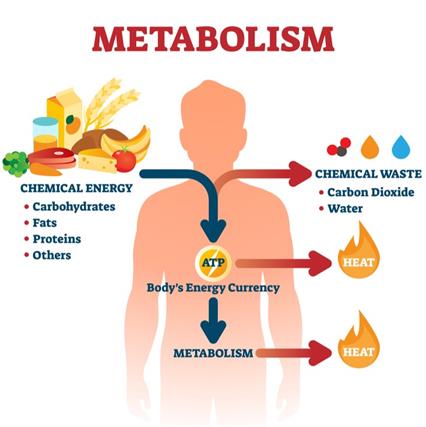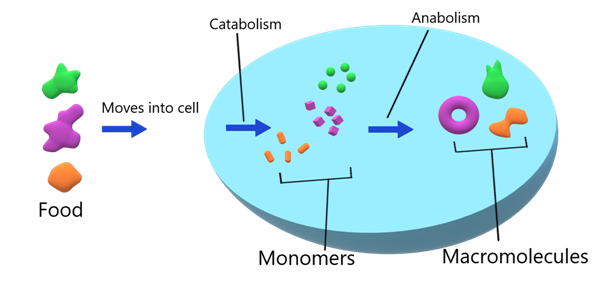PDF chapter test TRY NOW
Metabolism:

Metabolism
The sum total of chemical reactions by which cells produce energy needed to sustain life.

Metabolism
Anabolism:
It is also known as constructive metabolism or building up process.
Example:
Glucose \(\rightarrow\) Glycogen + Sugars
Amino acids \(\rightarrow\) Enzymes, hormones, proteins
Catabolism:
Catabolism means a destructive metabolism or breaking down process.
Example:
Carbohydrates \(\rightarrow\) Glucose
Glucose \(\rightarrow\) Carbon dioxide, water and heat
Protein \(\rightarrow\) Amino acids
Important!
What is Basal Metabolism?
It refers to the minimal energy required to sustain natural body functions in a warm environment for complete rest 12–18 hours after food consumption.
Summary:
- Cell is the structural and functional unit of life also varies in size, shapes etc.
- Tissues are a group of similar cells functions together.
- Organs are the group of tissues and a group of organs called the organ system.
- The eye (organ) is concerned with the vision and, the respiratory system (organ system) helps for breathing and the exchange of gases.
- The diffusion is flowing from higher concentration to low concentration.
- The osmosis flows with the semi-permeable membrane from high to low concentration.
- Homeostasis is the maintenance of a constant internal environment of the organism's body.
- The osmoregulation equalises the water content in the organism's body.
- Metabolism is the sum total of chemical reactions in an organism's body to ensure life.
Reference:
https://commons.wikimedia.org/wiki/File:Anabolism_and_Catbolism.png
